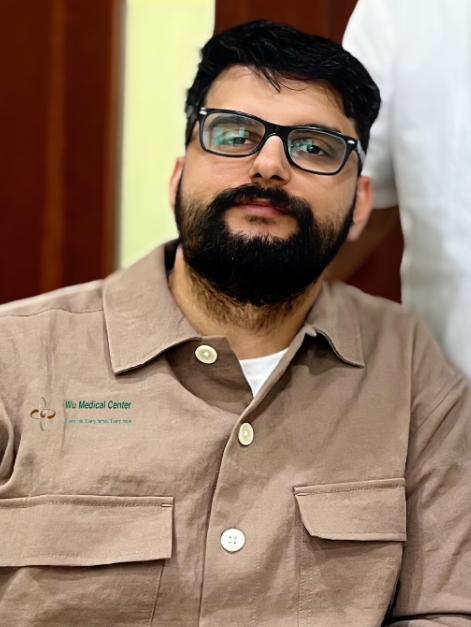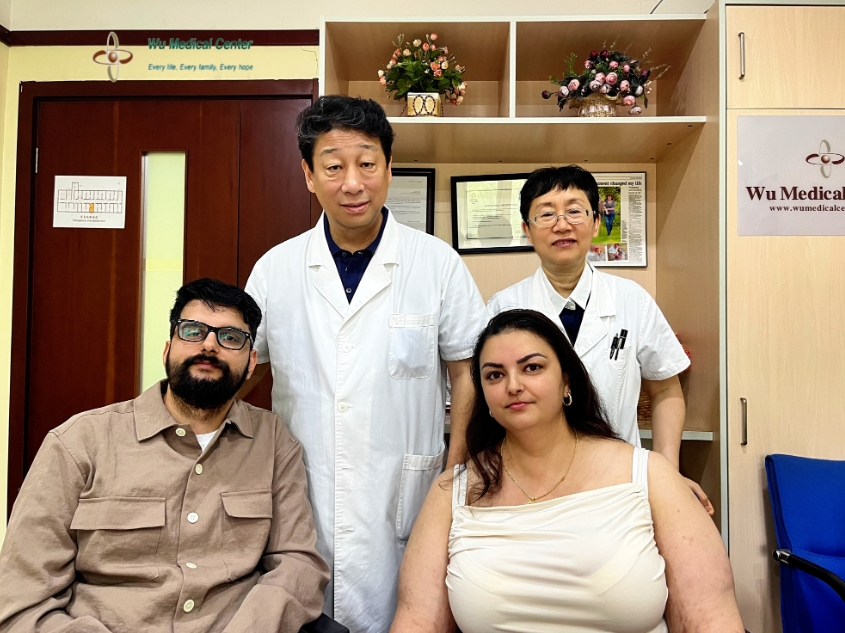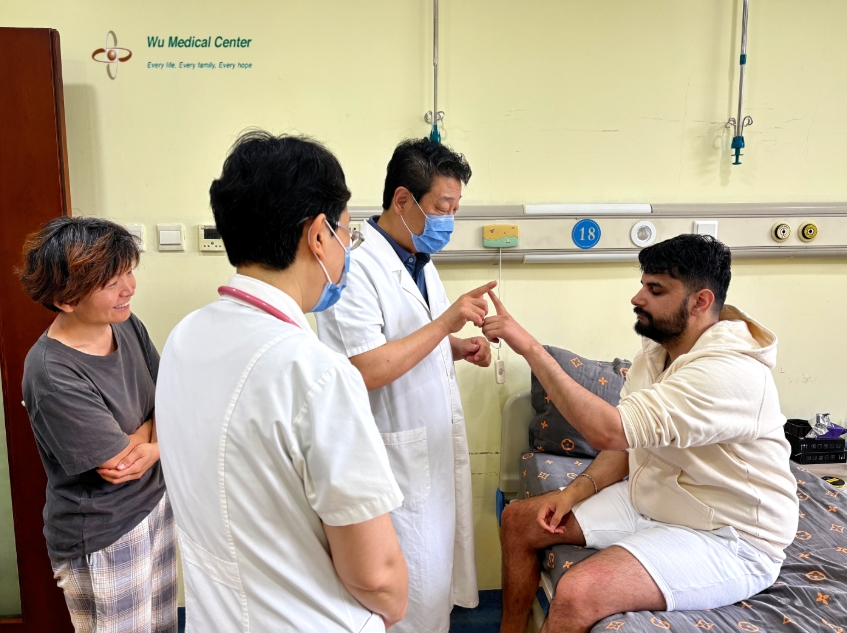Sehran Aliti-Spinocerebellar ataxia type 10-(Sweden)
 Patient Name: Sehran Aliti
Patient Name: Sehran Aliti
Gender: Male
Age: 29 years old
Nationality: Sweden
Diagnosis: Spinocerebellar ataxia type 10
Condition at Admission:
The patient was admitted primarily due to "gait and balance disorders accompanied by limb tremors for over 13 years," diagnosed as "Spinocerebellar Ataxia Type 10." His main symptoms include balance disturbances, limb tremors, and uncoordinated movements in daily activities, requiring significant assistance and support from others. The patient and his family denied any history of other genetic diseases or chronic underlying conditions.
Physical Examination upon Admission:
The patient's pulse was 80 beats per minute, respiratory rate 20 breaths per minute, and blood pressure 125/75 mmHg. No abnormalities were noted during cardiac and pulmonary auscultation. His abdomen was soft, and the liver and spleen were not palpable below the ribs. The peripheral temperature of his limbs was notably low, and there was no edema.
Neurological Examination:
The patient was alert but appeared easily anxious. His speech was unclear. His memory, calculation ability, and orientation were generally normal. Both pupils were equal, round, and 3mm in diameter, with a brisk light reflex. There were observable bilateral horizontal nystagmus and vertical gaze nystagmus, and his visual fields were approximately normal. His bilateral forehead wrinkles were symmetrical, and he exhibited strong but uncoordinated chewing, occasionally leading to choking. The nasolabial folds were equally deep on both sides, and there was no deviation of the mouth corners. His soft palate elevated strongly, with the uvula slightly deviated to the left. He could puff his cheeks with strength, and his tongue was centered with fissures. His hearing was normal. He showed symmetrical and strong shoulder shrugging and neck turning. Muscle strength in both upper and lower limbs was graded as 5-/5-, with significant tremors and instability in his limbs. Deep tendon reflexes were hyperactive bilaterally, and the right lower limb showed a positive Babinski sign. Both superficial and deep sensations were normal. The finger-to-nose test was slow and unstable, with the finger-to-finger and rapid alternating movements being slow and clumsy, particularly pronounced on the left side. The heel-to-shin test was unstable. The Romberg test was positive with eyes open and closed, indicating he could not stand or walk independently. Meningeal signs were negative.
Treatment Process:
The patient was diagnosed with "Spinocerebellar Ataxia Type 10" upon admission. He was treated with CAST therapy and a combination of neural stem cells and mesenchymal stem cells to repair cerebellar and spinal cord nerve damage, nourish nerves, improve the internal environment, and regulate immunity, along with comprehensive rehabilitation treatment.
Post-Treatment Results:
The patient’s mental state has significantly improved, with a noticeable reduction in anxiety and nervousness; vertical nystagmus has resolved. His balance and coordination have improved, with marked enhancement in the speed, agility, and accuracy of his rapid alternating movements and finger-to-finger tests. The stability and accuracy of the finger-to-nose test have also improved compared to before, and the heel-to-shin test of both legs is now generally stable and accurate. He can rise from a seated position more quickly, maintain independent standing for over 30 seconds, and shows significant improvement in the Romberg test, as he can take three steps independently with minimal assistance allowing for longer-distance walking. His limb tremors have noticeably decreased. Muscle strength in all four limbs remains at 5/5, with no pathological signs present. The peripheral temperature of his limbs has improved.



